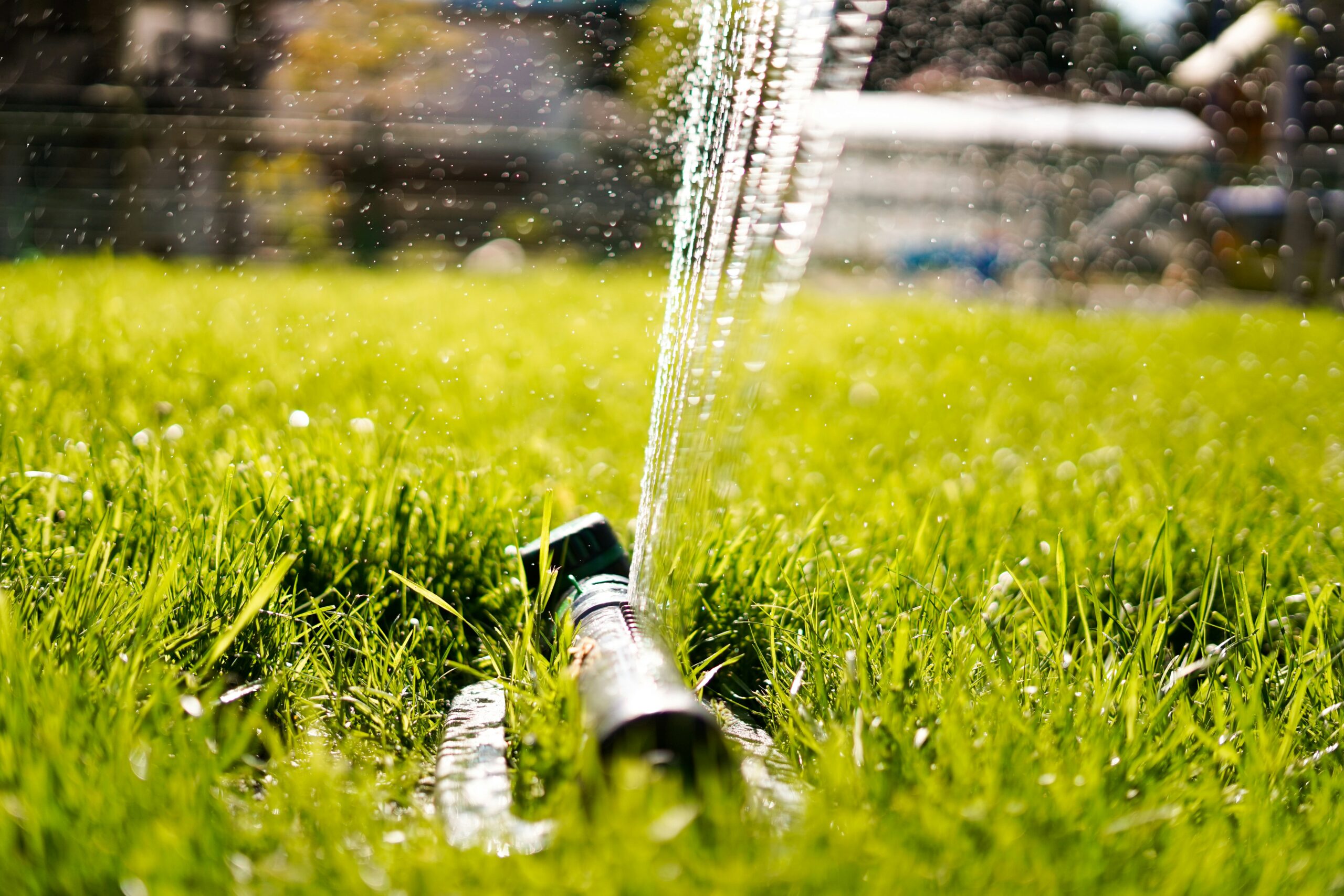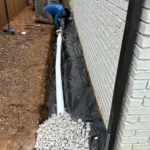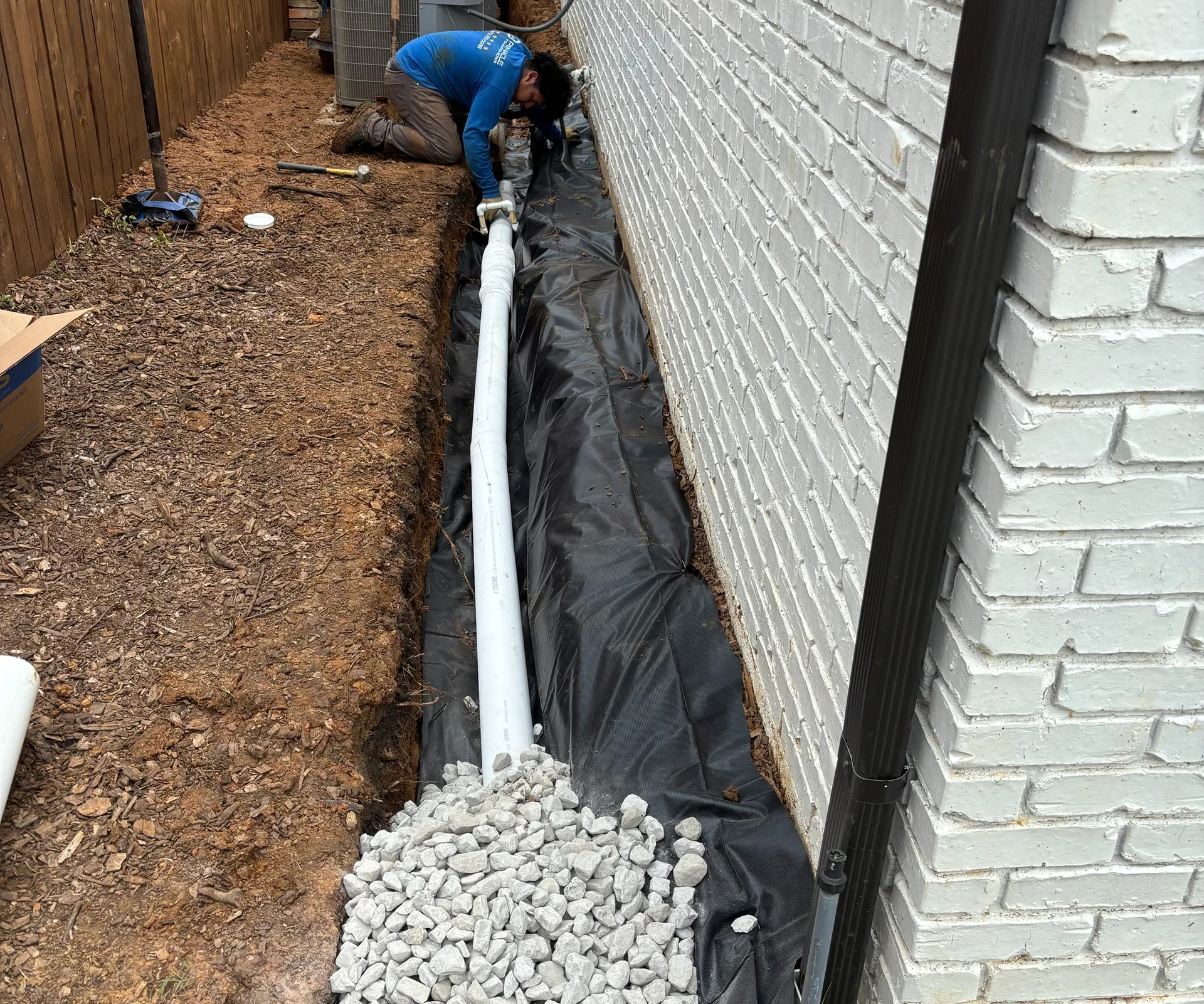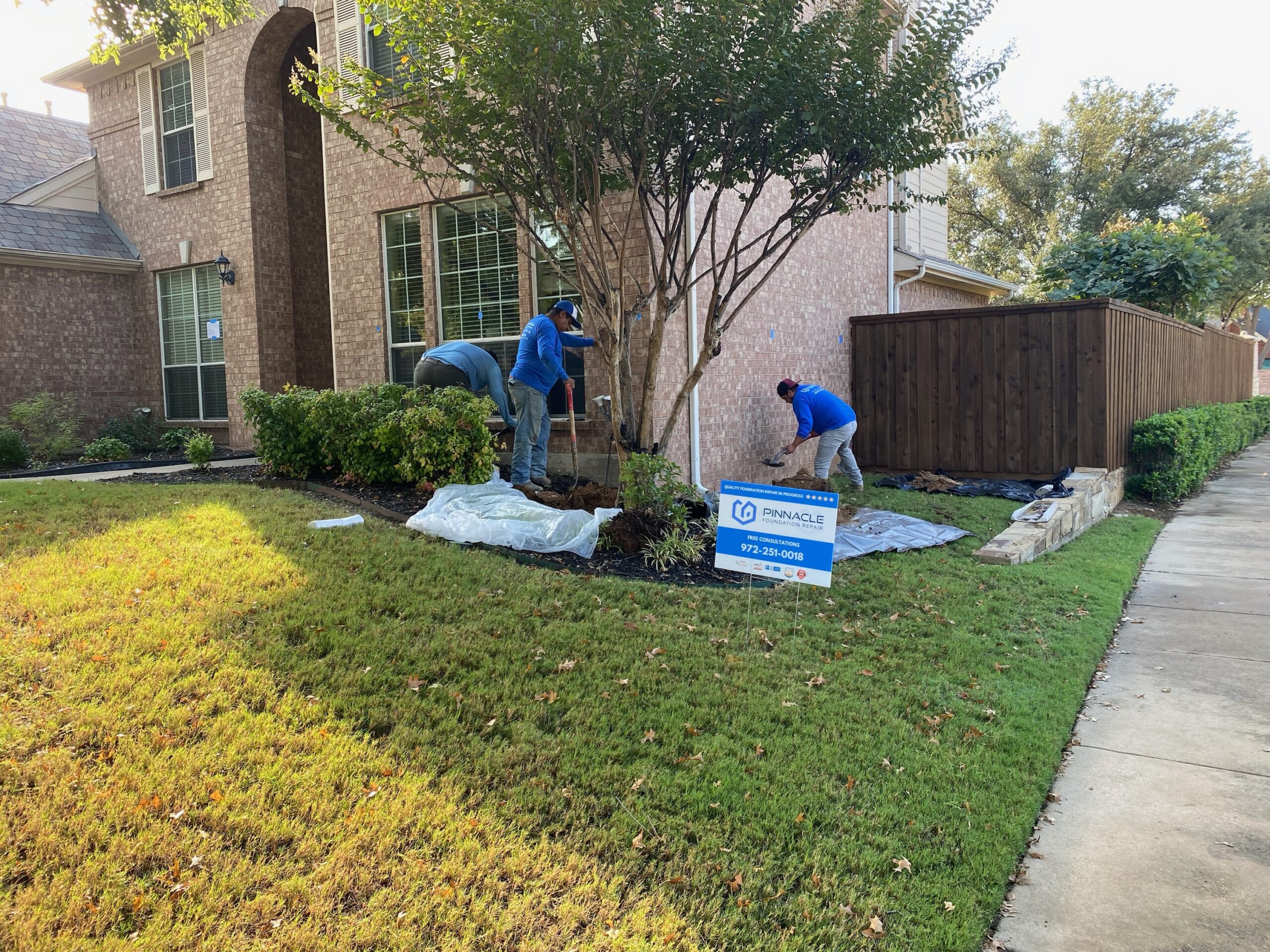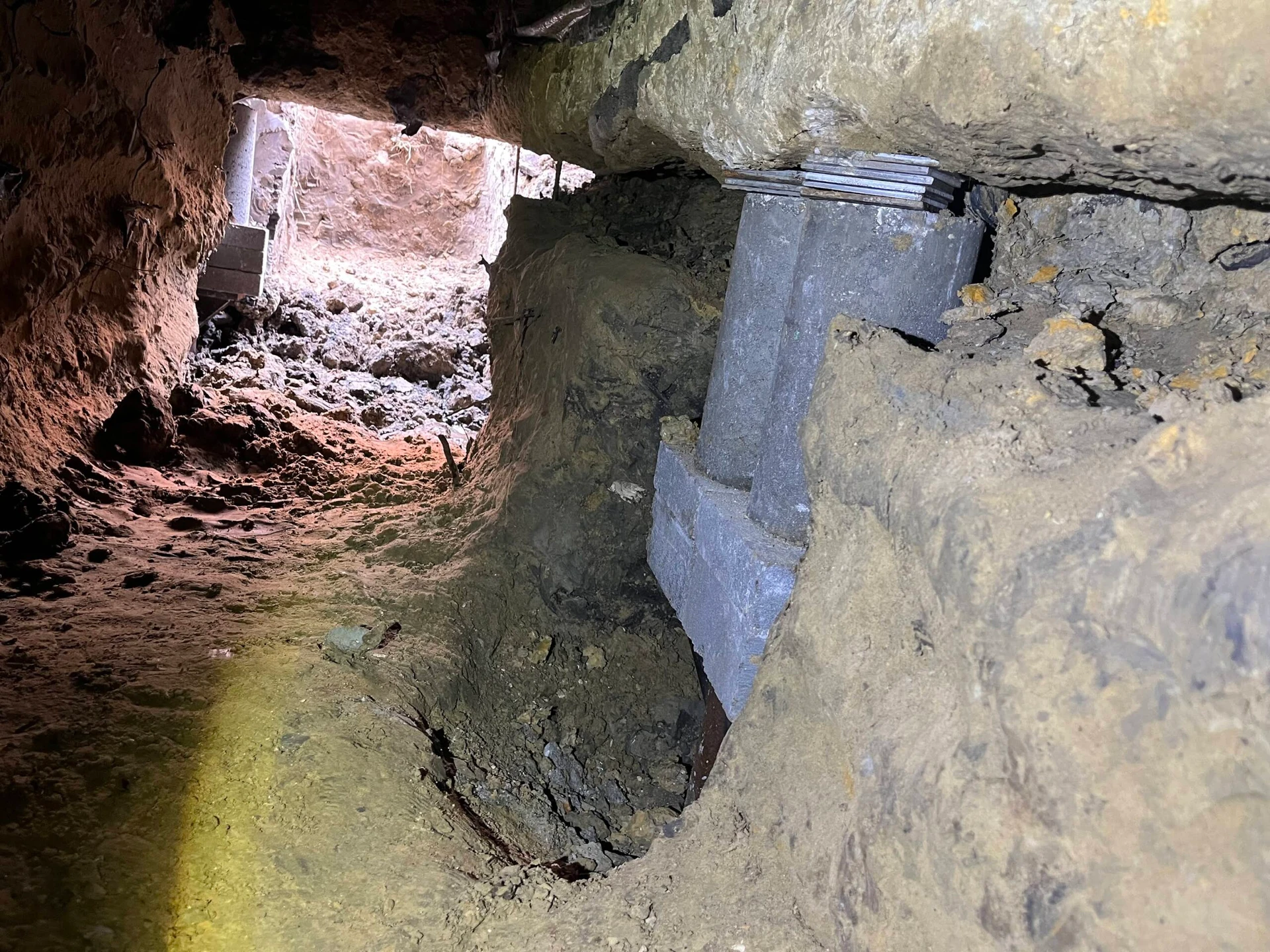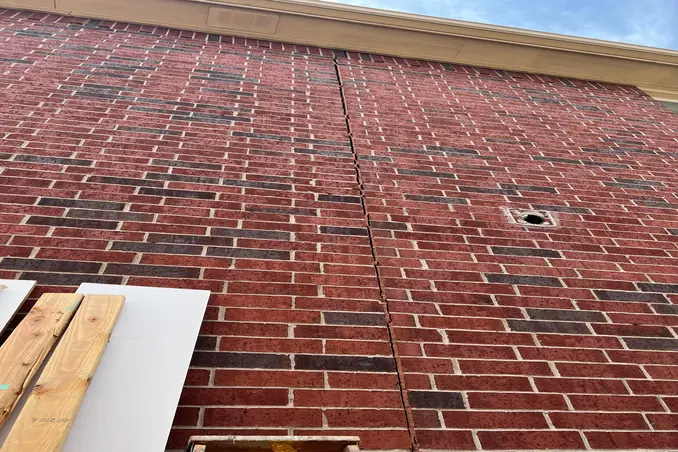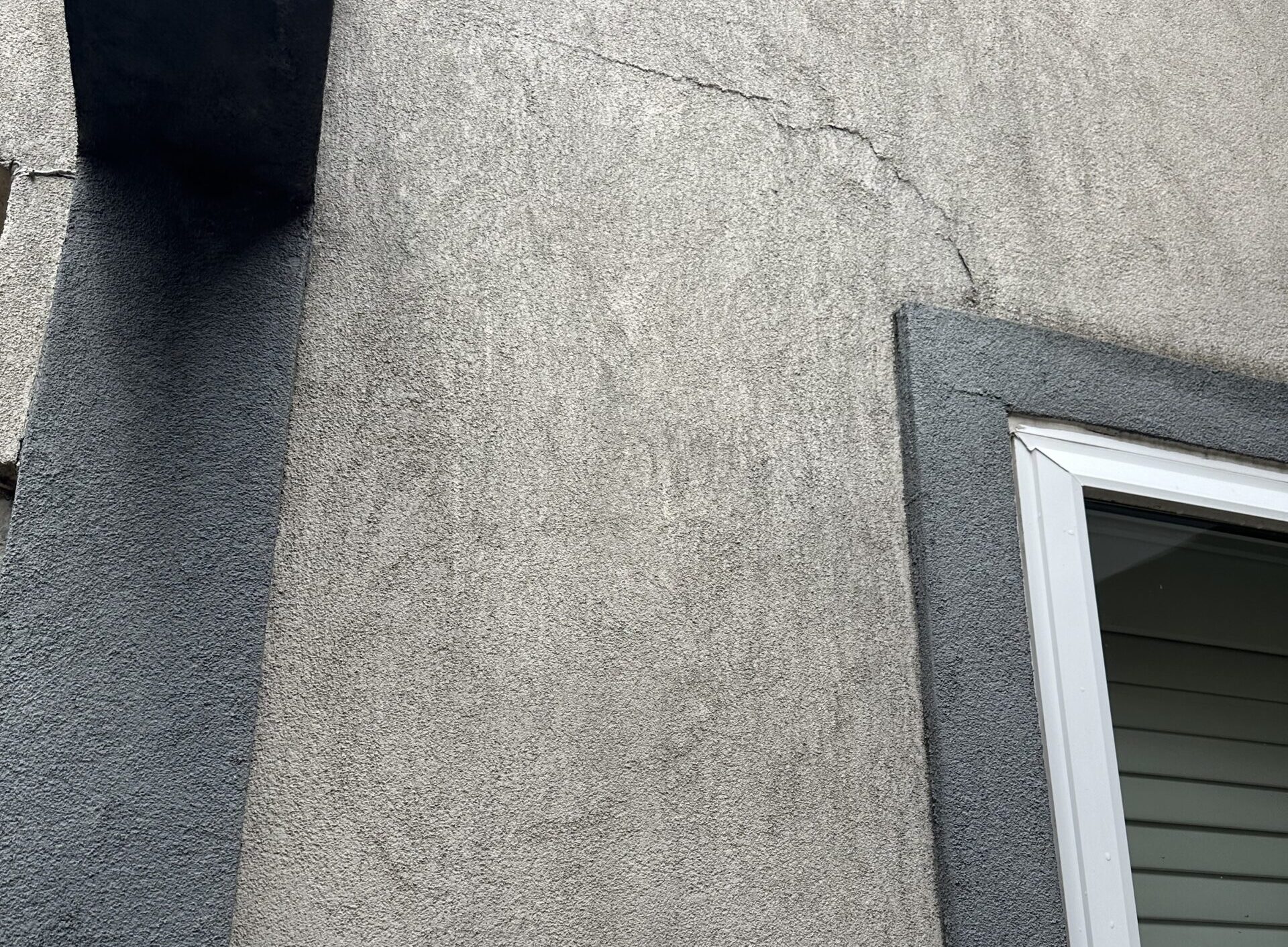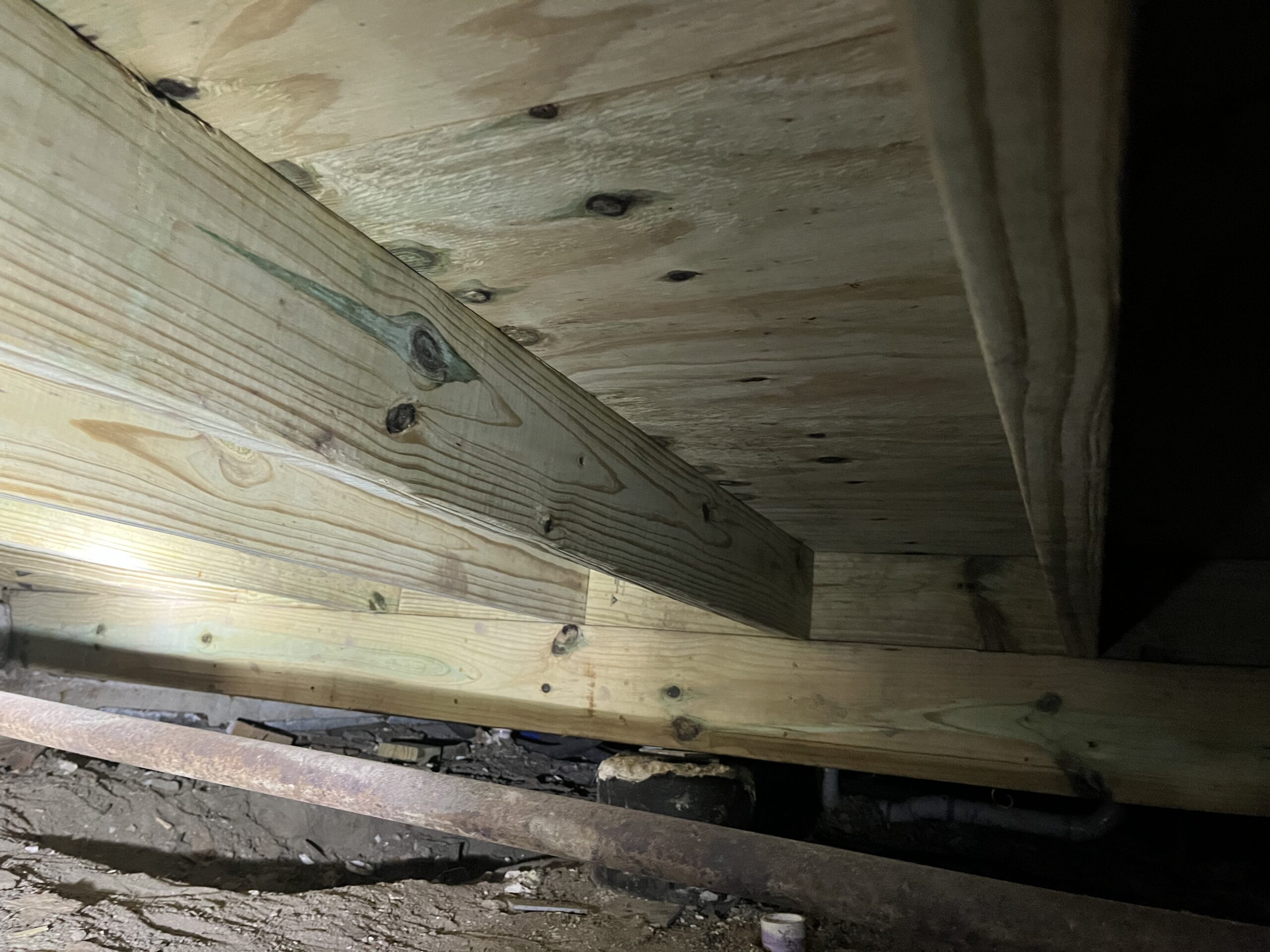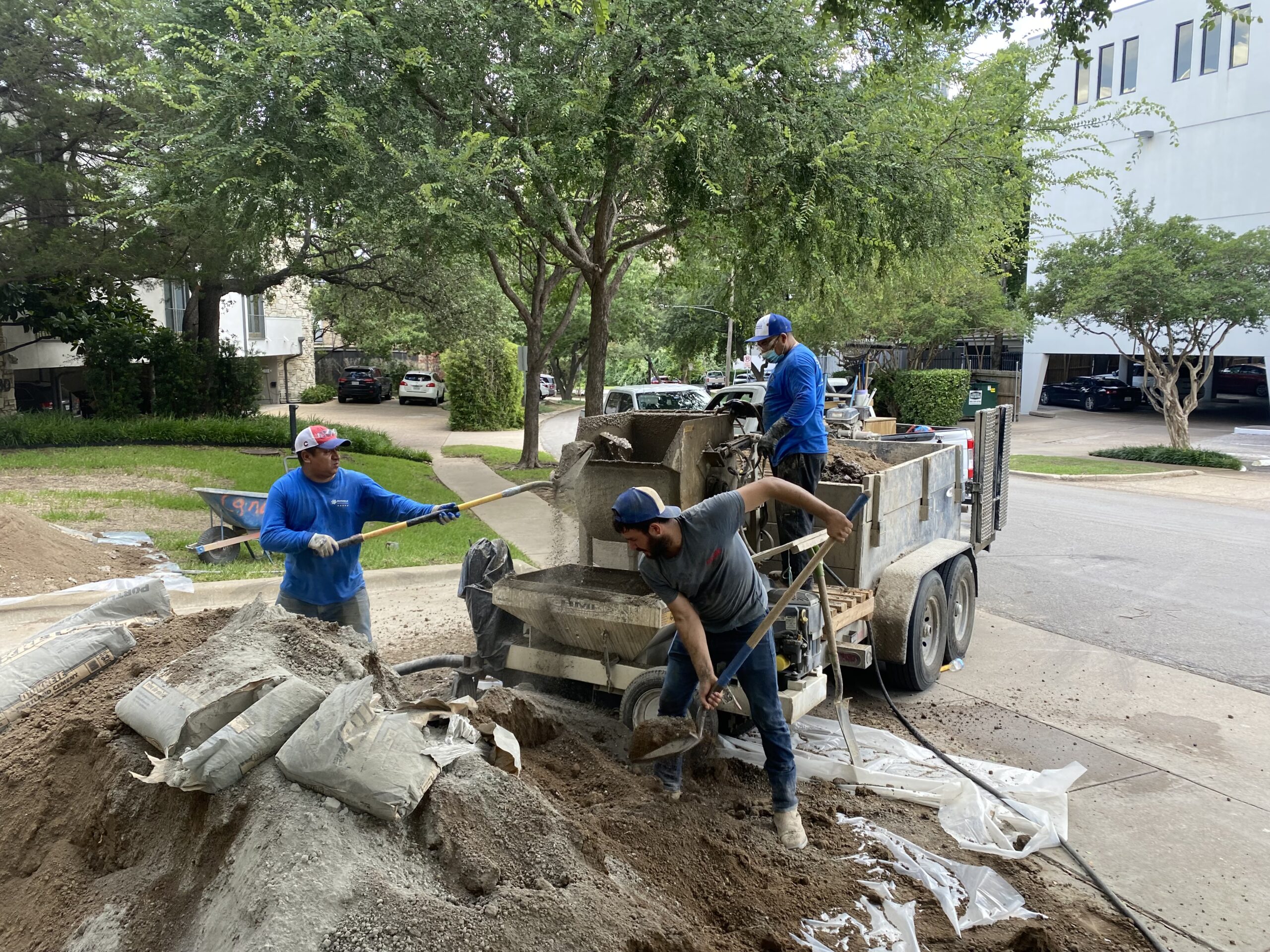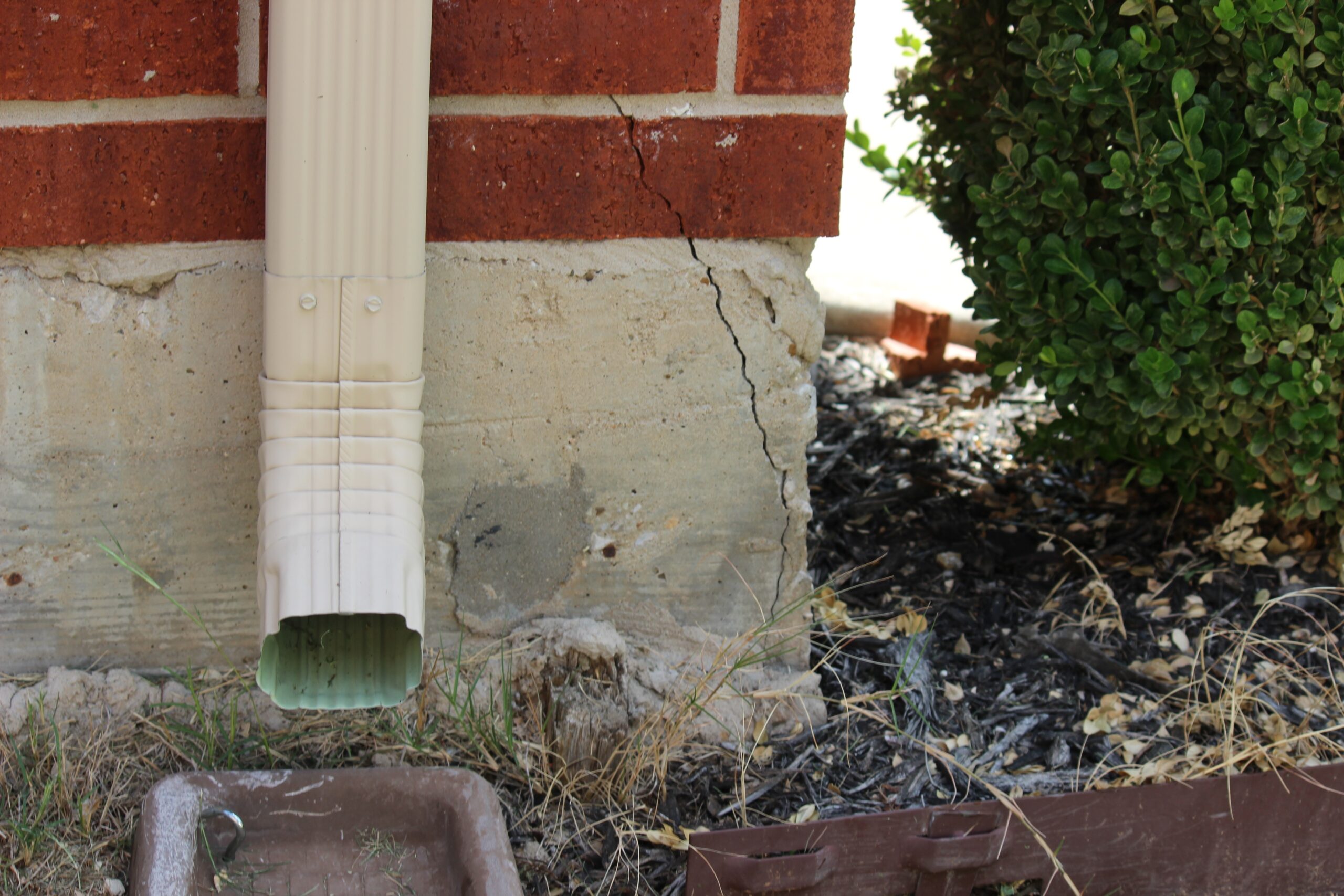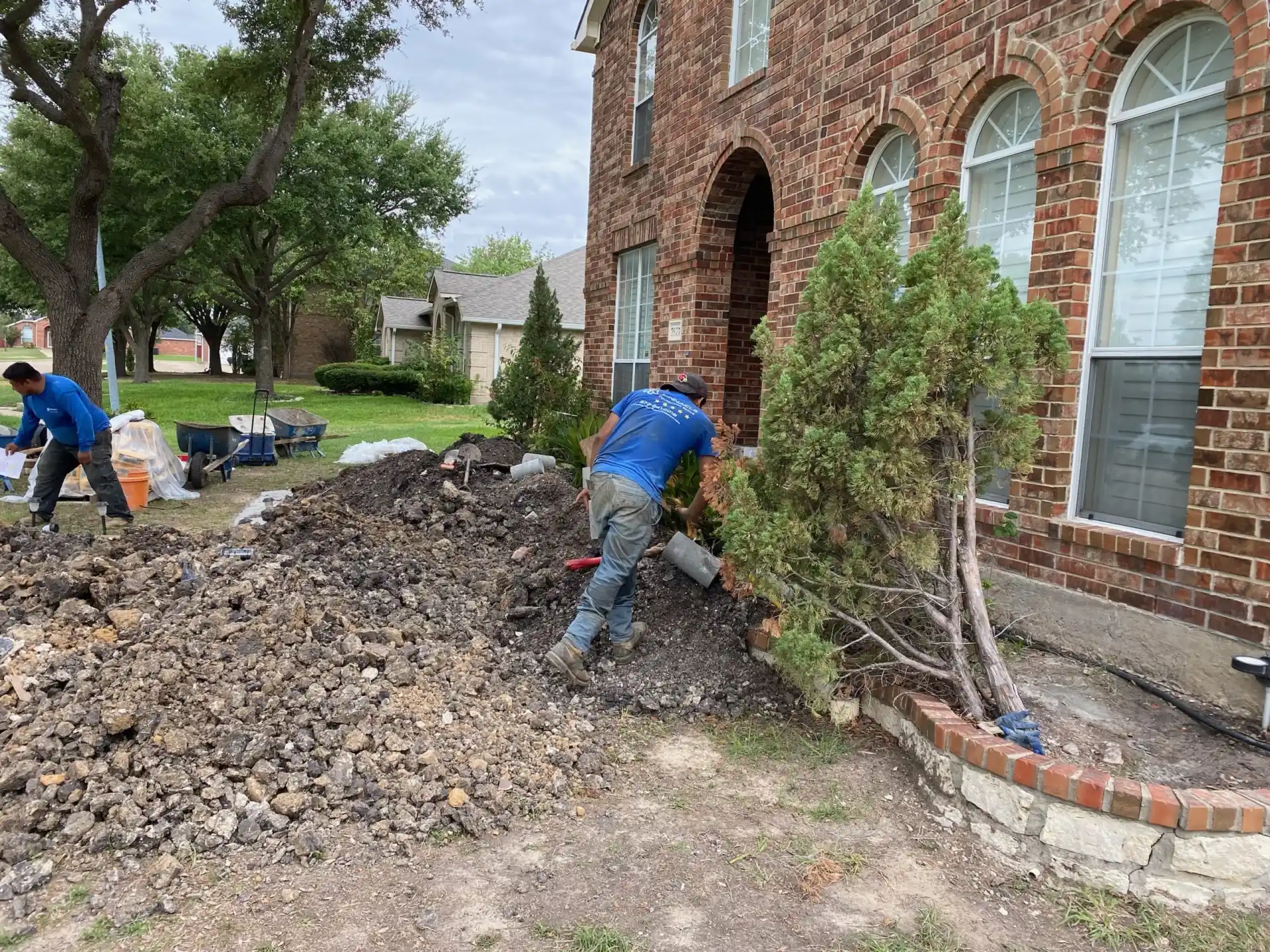Your home’s foundation is the backbone of your home, holding everything up. But just like any other important part of your house, it needs some attention to stay strong. One key element of foundation maintenance you can do yourself is something you might not expect: foundation watering.
This isn’t about just simply giving your flowerbeds a quick rinse. Foundation watering is about strategically applying water to the soil surrounding your foundation to maintain consistent moisture levels.
Why is this so important? Well, the soil around your home can be temperamental. Most Texas soil behaves like a sponge – too dry, and it shrinks away, putting stress on the foundation and potentially causing cracks. Too wet, and it expands, potentially causing your house to move. Foundation watering helps achieve that perfect balance, keeping your foundation happy and your home stable.
Understanding Your Soil and Watering Needs
The key to successful foundation watering lies in understanding your soil. Different soil types have varying water retention capabilities, which means they need watering at different frequencies.
Here’s a breakdown of the most common Texas soil types and their impact on watering:
Clay: Clay holds onto water like a champ. When dry, it shrinks significantly, putting a strain on your foundation. Watering Tip: During dry periods, clay soil might need more frequent watering, potentially 2-3 times a week for short durations. Most homes in Texas lie on clay soil.
Sandy Soil: Sandy soil, on the other hand, lets water drain quickly. While less prone to shrinkage, it can still allow moisture to move away from the foundation too rapidly. Watering Tip: Sandy soil might require less frequent watering, perhaps once a week, but ensure the water soaks in deeply.
Loam: Loam is the golden child of soil types. It’s a balanced mixture of sand, silt, and clay, offering good drainage while retaining some moisture. Watering Tip: Loam likes a happy medium – give it a good soak, but don’t drown it! Aim for steady moisture without overdoing it.
Watering Your Foundation Like a Pro
Now that you understand your soil type, it’s time to put that knowledge into action! Here’s how to become a foundation watering whiz pro:
Watering Methods:
There are a few ways to deliver water effectively to the soil around your foundation:
Soaker Hoses: These watering champions are our top recommendation. Soaker hoses have tiny pores along their length that slowly release water directly into the soil. For best results, place the soaker hose about 1 to 1.5 feet away from the foundation.
Drip Irrigation: This system delivers water directly to the root zone through a network of drip lines or emitters. It’s a water-efficient option that involves burying the lines underground during installation. While this might take a bit more effort upfront compared to soaker hoses, it ensures targeted consistent watering where the foundation needs it most.
Hand Watering: While not ideal, hand watering with a hose can be a temporary solution. Careful to avoid overwatering specific areas!
(It’s important to avoid directly spraying water at your exterior walls or foundation. Why? Because excessive water can seep into the foundation, potentially causing damage over time. Instead, aim to evenly water the soil around your home to maintain its optimal moisture levels.)
Setting Your Watering Schedule:
The goal is to achieve deep watering (reaching 6-12 inches down) without oversaturating the soil. This might involve shorter watering sessions (15-20 minutes) 2-3 times a week during especially hot, dry periods.
How do you know when your foundation is thirsty? Here’s a handy trick you can do yourself, we call it the “Screwdriver Test”. Simply push a screwdriver a few inches into the soil near the foundation. If it’s tough to push it into the soil, it’s time to water more. If the screwdriver goes in easily and comes out covered in mud, ease up on watering. But if it slides in smoothly and comes out clean, you’re watering just right!
At Pinnacle Foundation Repair, we recommend setting a watering schedule and sticking to it (especially during the summer). An easy way to accomplish this is to keep your yard and flowerbeds directly surrounding your home well-watered to maintain their health and appearance. Nurturing your grass and plant life throughout the year will naturally lead to healthy moisture levels in the soil under your foundation.
Beyond Watering: Keeping Your Foundation Healthy
Foundation watering is an important tip for homeowners, but it’s not the only factor in foundation health. Simply having flowerbeds surrounding your house and maintaining good drainage can go a long way in keeping the moisture levels under your foundation at healthy levels.
Mulch Magic: Regularly adding a layer of mulch around your foundation in your flowerbeds helps retain moisture in the soil, which reduces the need to water as frequently and prevents evaporation. Opt for organic mulch like shredded bark or wood chips, which decompose over time and add nutrients to the soil.
(Remember, make sure your mulch layer isn’t covering your foundation. If you have a slab foundation, at least 4 inches of concrete should be visible at all times. For pier and beam foundations, ensure the mulch layer doesn’t touch the beams directly. Leave a gap of a few inches between the mulch and the beams to prevent moisture buildup, which can lead to wood rot.)
Drainage Do’s and Don’ts: Proper drainage is vital to prevent water from pooling around your foundation. Ensure the ground slopes away from your house to direct water runoff, and install gutters if you don’t have some already (with downspouts facing away from the foundation).
Watering Your Way to a Stable Foundation
By following these tips and keeping the soil around your foundation properly hydrated, you’re essentially investing in the long-term stability and value of your home.
Remember, the key is consistency. Develop a watering routine (especially during the hot and dry summers) that suits your soil type and climate, and monitor moisture levels to adjust as needed. And don’t forget the power of mulch and proper drainage to further support your foundation’s health!
If you ever have any concerns about foundation cracks, uneven floors, or drainage issues around your home, don’t hesitate to reach out to the professionals. Here at Pinnacle, we’re foundation experts with over 20 years of experience dedicated to helping homeowners maintain strong, stable foundations. Contact us today for a free inspection or to discuss any foundation-related questions you might have!

